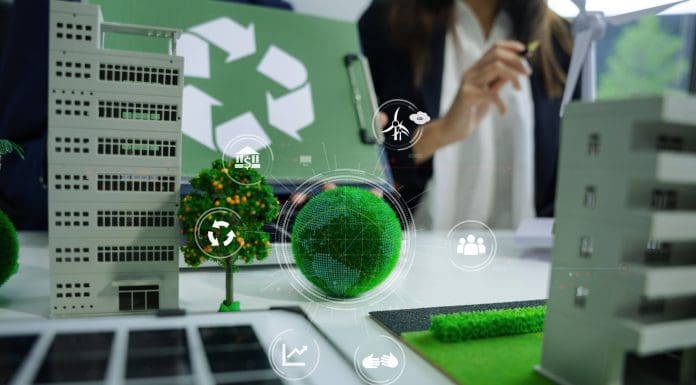Sustainable project management has emerged as a salient approach to reconcile the demands of building development with the urgent need for environmental preservation
The accelerating global environmental crisis necessitates a paradigm shift in every industry, particularly in the Architecture, Engineering, and Construction (AEC) sector. As key contributors to the built environment, these industries bear a significant responsibility for the ecological footprint of our cities and landscapes.
Delving into the realm of sustainable construction necessitates a comprehensive analysis and visualisation of sustainable projects, encompassing factors such as waste and energy management, sustainable design, and green procurement practices to enhance environmental, economic, and social sustainability indicators.
The understanding of Sustainable Construction Projects (SCPs) management in the AEC industry is crucial for achieving environmental and economic targets.
Sustainable Construction Projects (SCPs) management
SCPs management integrates strategies that aim to reduce carbon emissions, prevent wastage, and encourage nature preservation. They form the bedrock of sustainable design, an essential component of SCPs management. Sustainable design merges aesthetics with ecological responsibility, creating spaces that are not only visually appealing but also environmentally friendly.
Furthermore, sustainable procurement practices in the AEC industry enhance the environmental performance of construction projects. This is achieved by incorporating a sustainable procurement index for equipment acquisition, ensuring that the materials used in construction projects are sourced responsibly and have minimal environmental impact.
Principles of sustainable project management
The principles of sustainable project management are underpinned by three key sustainability indicators: environmental, economic, and social. Environmental sustainability in SCPs emphasises on water conservation, stormwater management, and nature preservation. Economic sustainability targets the efficient use of resources, while social sustainability focuses on the equitable distribution of benefits and burdens among stakeholders.
Transparency, data availability, and funding sources are other key elements that further reinforce these principles.
Innovative strategies for eco-friendliness
Technological advancements like Construction 4.0, Building Information Modelling (BIM), and the Internet of Things (IoT) also play critical roles in integrating sustainability. These technologies facilitate efficient resource management, improve operational efficiency, and support the implementation of sustainable design and construction strategies.
The role of government regulations
Government regulations, undeniably, play a pivotal role in shaping sustainable practices within the construction and infrastructure projects in the AEC industry. They provide normative guidelines from different countries that mandate construction projects SCPS management to adopt green building standards, encourage the use of new technology, and promote adherence to green rating systems.
These regulations are designed to ensure that construction projects are sustainable and environmentally responsible. They govern aspects such as water conservation, use of native landscapes, and carbon emissions reduction. Compliance with these regulations not only aids in environmental protection but also facilitates smoother regulatory processes and enhances market appeal.
An AEC industry analysis reveals that government regulations serve as an effective tool to steer the sector towards sustainability. They stimulate the introduction and implementation of new technology in construction practices, including advanced building materials and energy-efficient systems.
Moreover, they influence the development of green rating systems, which are valuable tools for assessing and benchmarking the environmental performance of buildings.
The post Sustainable project management in the AEC industry appeared first on Planning, Building & Construction Today.


